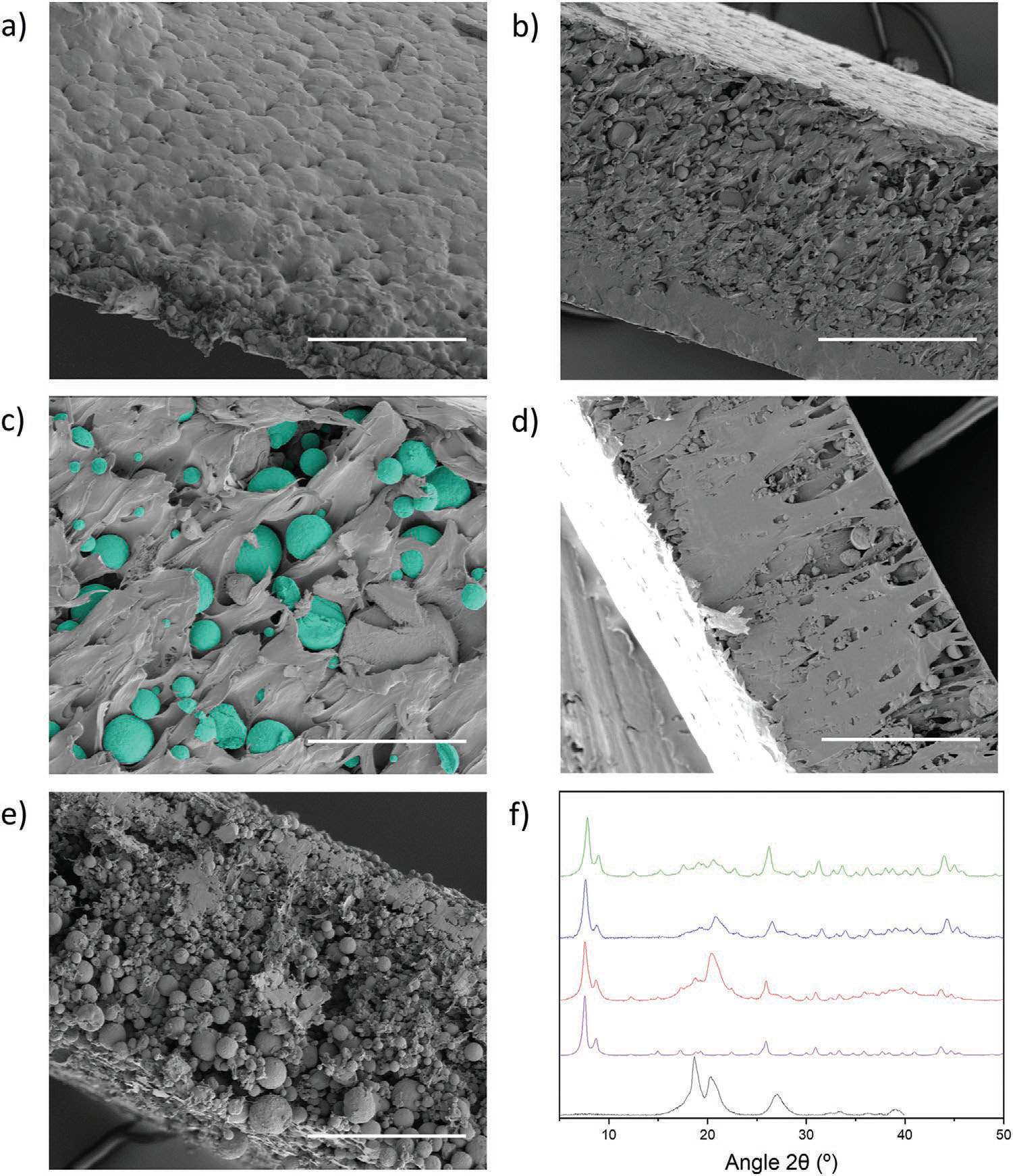| Feb 12, 2022 |
Antibacterial films based on metal-organic framework (MOF) composites
(Nanowerk News) Hospital-acquired infections are a major issue for modern medicine, with pathogens like methicillin-resistant Staphylococcus aureus (MRSA) and Clostridium difficile (C. diff) getting extensive publicity.
|
|
One in 10 hospital patients are affected by so-called nosocomial infections, or healthcare-associated infections – an infection you get while you're in the hospital.
|
|
In modern healthcare, invasive procedures and surgery, indwelling medical devices, and prosthetic devices are associated with these infections. Patients and healthcare professionals bring germs inside hospitals and pass them to each other. Among other mechanisms, viruses and bacteria can spread when a person touches a site where germs have settled, such as a doorframe, handrail or medical device. A healthy person can often fight off these bugs, but hospital patients can be more vulnerable to infection.
|
|
The result is an extension of hospital stays by more than 10 million patient days per year in Europe alone. And a staggering 3 million deaths are caused by hospital-acquired infections.
|
|
Although medical facilities have stringent cleaning policies, insist on frequent hand-washing by staff, and have powerful drugs at their disposal, it is difficult to eliminate these infections unless you can make the hospital environment more hostile to microbes. Chemical disinfectants or coatings containing hydrophobic compounds, silver ions or copper can reduce infectious contaminants on surfaces, but these treatments don’t last.
|
|
That makes antimicrobial coatings of hospital surfaces and medical equipment a simple prophylactic strategy. Such coatings impede the arrival and growth of microorganisms on surfaces, and maintain their inhibitory or destructive activity against transitory microorganisms after each use, thereby lowering the probability of future infections resulting from surface-contact.
|
|
Among the most efficient topical biocides is iodine, which is widely available, inexpensive, and has broad-spectrum antimicrobial activity. Iodine works by causing irreversible, nonspecific damage to microorganism cells; thus, unlike antibiotics, it does not lead to resistance.
|
|
However, the low aqueous solubility of iodine limits its use in many applications. Moreover, although iodine is much more soluble in alcohols, these solvents permeate tissue too rapidly, causing over-administration of the iodine, which in turn leads to irritation and other undesirable side effects.
|
|
Reflecting on approaches to circumvent the limitations of using iodine solutions directly in antimicrobial surface applications, the authors of a recent paper in Advanced Functional Materials ("Antibacterial Films Based on MOF Composites that Release Iodine Passively or Upon Triggering by Near-Infrared Light") envisioned that adsorption of iodine into porous materials could enable both its storage and subsequent release, while preventing direct contact with human skin.
|
 |
| a-c) Field-emission scanning electron microscopy (FE-SEM) of the cross-section of the films containing AuNR@SiO2@UiO-66 microbeads at 25% (w/w). In (c), the microbeads are highlighted in pale green to better illustrate encapsulation of them. d,e) FE-SEM of the cross-section of the films containing AuNR@SiO2@UiO-66 microbeads at 8% (d) or 46% (e) (w/w). f) Powder X-ray diffraction (PXRD) of a pristine polyvinylidene difluoride (PVDF) film (black), AuNR@SiO2@UiO-66 microbeads (purple), and films containing AuNR@SiO2@UiO-66 microbeads at 8% (red), 25% (blue) or 46% (green) (w/w). Scale bars: 200 µm (a), 50 µm (b), 5 µm (c), 50 µm (d), and 50 µm (e). (Reprinted with permission by Wiley-VCH Verlag)
|
|
Furthermore, they imagined that the resultant porous material could then be incorporated into polymeric matrices to yield antimicrobial films or coatings. Among the various types of porous materials available to store iodine, the researchers reasoned that metal-organic frameworks (MOFs) would be ideal.
|
|
In their paper, the team from the Universitat Autònoma de Barcelona report the design, synthesis, and in vitro validation of antibacterial activity of MOF-based composite films that adsorb and store iodine at very high concentrations, and can release it in two ways: slowly and passively at low concentration; or, upon triggering by NIR light, rapidly and actively at high concentration.
|
|
This MOF composite is made of a spherical microbead of the MOF UiO-66 that encapsulates gold nanorods coated with a silica shell (AuNR@SiO2). The microporous UiO-66 adsorbs and stores iodine, whereas the photoactive AuNR@SiO2 enables the active NIR-triggered release.
|
|
The team also demonstrates that these AuNR@SiO2@UiO-66 microbead composites can be incorporated into organic polymers for developing iodine-based antimicrobial films that retain the iodine adsorption capacity and both release mechanisms.
|
|
The researchers validated the antibacterial activity of their light-responsive films against gram-positive and gram-negative bacteria.
|

 By
Michael
Berger
– Michael is author of three books by the Royal Society of Chemistry:
Nano-Society: Pushing the Boundaries of Technology,
Nanotechnology: The Future is Tiny, and
Nanoengineering: The Skills and Tools Making Technology Invisible
Copyright ©
Nanowerk LLC
By
Michael
Berger
– Michael is author of three books by the Royal Society of Chemistry:
Nano-Society: Pushing the Boundaries of Technology,
Nanotechnology: The Future is Tiny, and
Nanoengineering: The Skills and Tools Making Technology Invisible
Copyright ©
Nanowerk LLC
